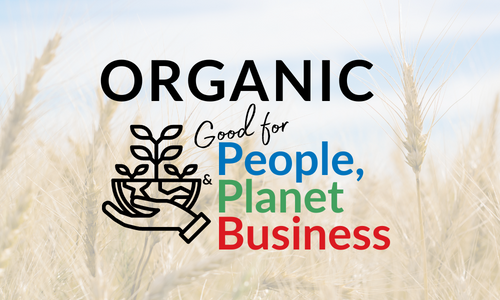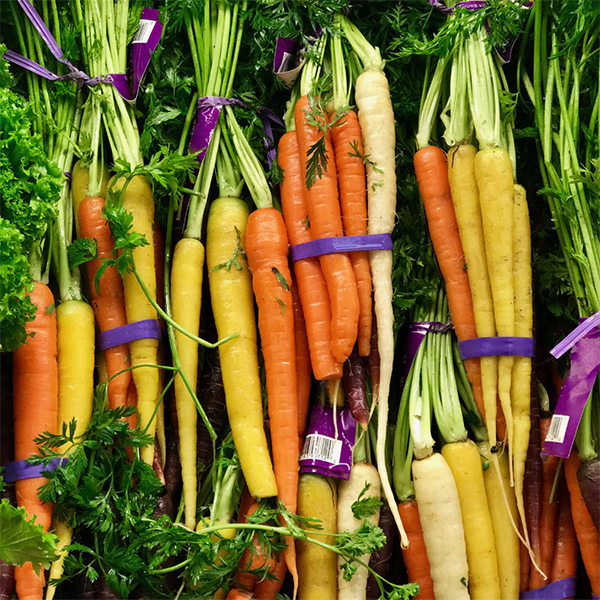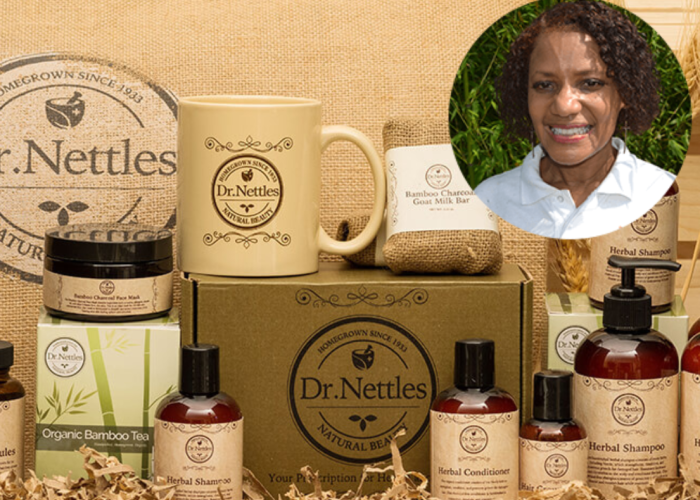Certified Retailers are retailer establishments that have undergone a certification process allowing them to use the USDA organic seal to represent processed products as certified organic or to generally represent the entire retail establishment as a certified organic operation.
Commingling refers to a situation where organic products come in physical contact with non-organic products, or, they are mixed up due to inadequate labeling or identification resulting in the possibility of a non-organic item being sold as an organic item.
Contamination occurs when an organic product is exposed to prohibited substances, often a sanitation material, cleanser or pesticide.
Exempt Producer is a non-certified producer with less than $5,000 annual gross organic sales. These products must not use the USDA organic seal or be represented as “certified organic.” They also must not be identified as organic in products prepared in the retail store.
Fumigants are chemical sprays, aerosols or the drip pads placed on the bottom of Styrofoam trays that are not allowed in organic food production or handling.
Handling Organic Product is when an item is transferred into a bulk bin or to a retail display, cooler or store shelf.
National List is the list of substances allowed or prohibited in organic production and handling.
National Organic Program (NOP) is responsible for setting and enforcing strict regulations for organic agricultural products that are either produced in the U.S. or imported for sale in this country, and they oversee the accreditation of 3rd party organic certifiers.
Organic Certification is a certification process for producers and handlers of organic food and other organic agricultural products that is carried out by a certifying agent. Any business involved in the production and handling of agricultural products can be certified, including seed suppliers, farmers, food processors, distributors, traders/brokers, retailers and restaurants.
Organic Control Points are any points or procedures in an organic packaging or handling system where there is a high probability that improper control may cause or contribute to the loss of organic integrity.
Organic Integrity is the quality of an organic product, obtained through the organic standards, which must be maintained throughout all retail in order for the final product to be labelled and/or marketed as organic.
Organic System Plan (OSP) is a written document that describes how your retail operation will meet the requirements of the National Organic Program.
Organic Trade Association (OTA) is a membership-based organization for the organic industry, ensuring that all parts along the organic value chain have a strong voice with government and to the public.
Pesticide Residues are leftover chemical, powder, wetness, film or scum on produce and on foodstuffs from an application or applications of pesticide. Pesticide residues are often considered toxic.
Prepackaged Product is a product that remains in the same package that it was received in.
Processing Product is considered cooking, baking, curing, heating, drying, mixing, grinding, churning, separating, extracting, slaughtering, cutting, fermenting, distilling, eviscerating, preserving, dehydrating, freezing, chilling, or otherwise manufacturing and includes the packaging, canning, jarring, or otherwise enclosing food in a container.
Prohibited Substances are substances that are prohibited by the USDA Organic Standard. This includes certain types of cleaning chemicals and pest control products.
USDA Organic Seal is a seal designed by the USDA that can be used only on products labeled as “100% Organic” or “Organic.”
USDA Organic Standards are regulations that require cultural, biological, and mechanical practices that foster cycling of resources, promote ecological balance, and conserve biodiversity. Products labeled as organic must be grown and processed without the use of toxic and synthetic pesticides and fertilizers, genetic engineering, antibiotics, synthetic growth hormones, artificial flavors, colors, preservatives, sewage sludge and irradiation.










